Posted on February 19, 2021
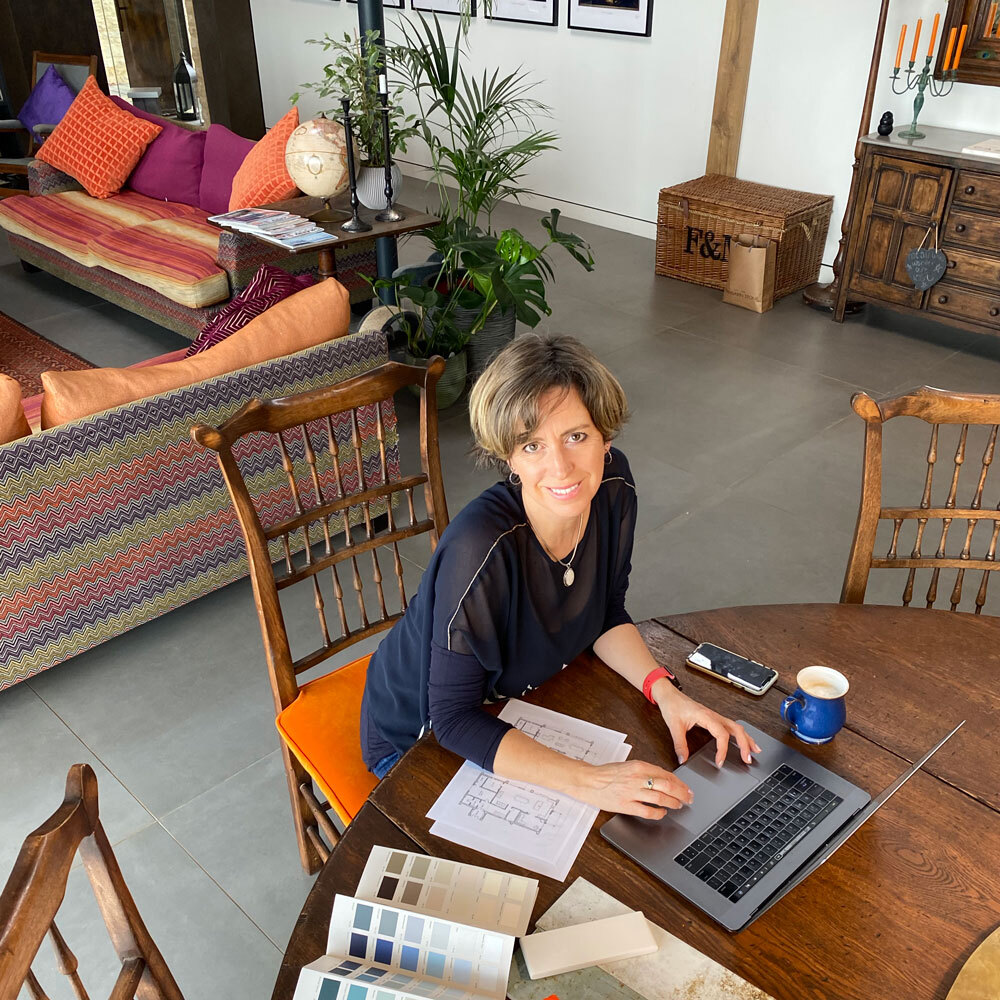
Founded in 2003, Castellum is an award-winning prime construction company offering both design and build solutions and outstanding levels of service as a main contractor. As a company Castellum also develop and sell their own properties covering London and the South West Home Counties from their Surrey HQ and Gloucestershire, Oxfordshire and Wiltshire from their Cotswold Office in Cirencester. The team work on a range of properties from new builds to agricultural conversions and the refurbishment and extensions of existing homes, including listed buildings and country house estates.
We caught up with Dorcas George-Jones of Castellum to give you some insight into what it's like to work with a developer to build your dream house, things you should know before and her inspiration behind all things design!
Talk us through the design process of building your own house.
Putting together a detailed brief is an exciting process and, given the bespoke nature of our work, our approach differs enormously from project to project. Some clients come to us knowing exactly what they want and others have a far blanker canvas.
It often depends where in the process we get involved. We really love being involved from the very beginning and that happens a lot – especially in The Cotswolds. Sometimes we're introduced to the project via the architect but where we're instructed on a design and build basis, we'll always endeavour to listen carefully to the wish list, identify the absolutes and the possibilities and fully develop the brief.
Where works are extensive, negotiating the planning process is more often than not necessary. For the uninitiated, the planning process can be a minefield and involves far more than just matching the right clients to the right architects - in The Cotswolds it often involves archaeological and environmental surveys and the timing for such surveys will form part of the critical path. Structural engineers are often needed alongside mechanical and electrical designers, it can also involve landscape designers and interior designers too. Keeping the momentum going and all the plates spinning is all part of the fun.
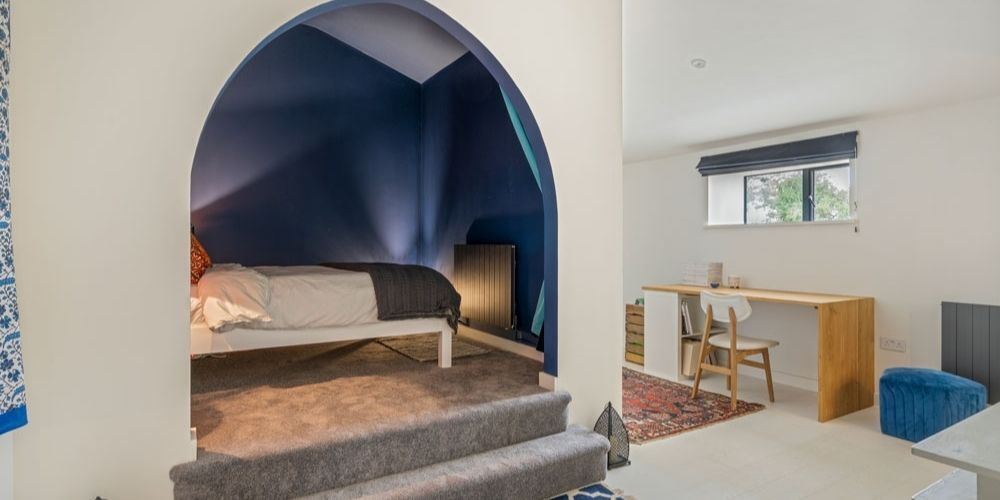
Pic credit: Ed Shepherd Photography
I tend to get rather obsessed with the flow of spaces and understanding how people live in them. We really get to know our clients to understand how they want to use their homes. It's all about the detail ultimately, so everything must be considered. What are the routes around the house? What gets put (or dropped) where? How does the inside interact with the outside? How does sound travel around the house? How do children and pets impact the requirements?
When it comes to choosing finishes it's sensible to think about which materials are going to be most practical. Dog claws can wreak havoc on a timber or resin floor, and glass balustrades and toddlers are not a great mix either. If the property will have underfloor heating, consideration must be given to the material going on top – carpet can work but it needs to be thought about. All this needs to be thought about in line with the desired aesthetic.
Visual design is obviously very subjective and some clients will already know the look they would like to achieve. Others will have interior designers they are keen to work with. Where they don’t, my role expands. Part of my role is to help those clients who want interior design as part of the Castellum offering, I also take on the role of interior designer for all of Castellum’s developments and property investments. I have done all (bar one room – credit there to Camilla Bellord) of the interior design in my own home and I am always happy to do it – I love it.
Finding a starting point to expand from is always good; an inspirational photograph, a particular piece of furniture or fabric, wall paper or a colour chart but really, anything goes and if the beginning isn't immediately evident, start anywhere… it really is very exciting.
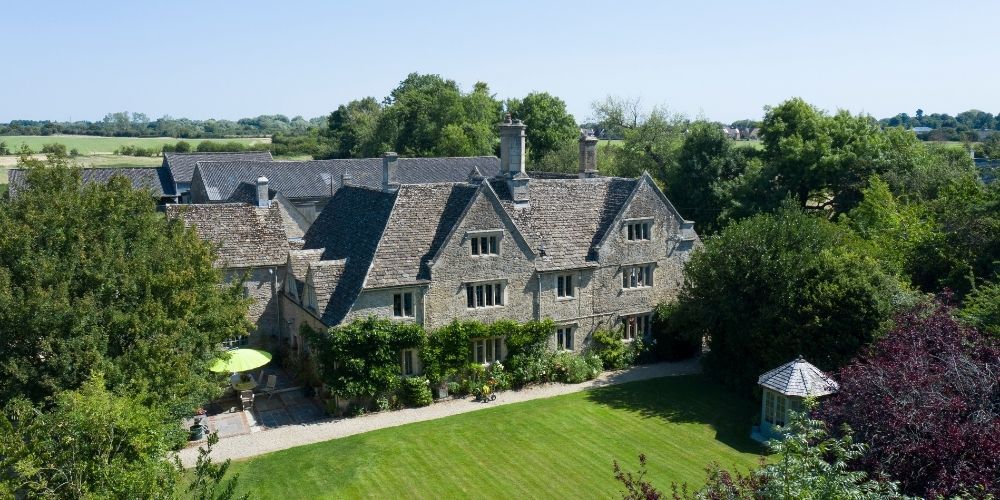
What would be your biggest tip when choosing an architect to work with?
I’m a big fan of staying local unless there's a good reason not to. An excellent architect can work anywhere but if you have not got one of those already up your sleeve then local has some huge benefits. Local architects will know the planners and have a good understanding of what will and won't be acceptable to them.
Sometimes serendipity steps in and lends a hand – I found the architect for my house because I spotted a building that resonated with me. I noted down the address, looked on the planning portal and trawled through the planning application to found out who the architect was. Do your research – Google them, look at their projects and this will often inspire you when it comes to your own brief.
Of course, if you are going down the design and build route, with a company like Castellum, we'll recommend a match and help you with the brief!
Which pieces in a home are worth investing in?
If you're talking about the things that form the fabric of the building, then invest in the things you cannot easily change! If you choose something you later regret, there will be a solution, but it could be very costly so it's worth taking the time to plan properly and get things right first time around. This really does apply from the groundworks up.
When it comes to investing in furniture and paintings, work out what you really care about and spend your money there. These are the things that will reflect your personality and give you the greatest pleasure.
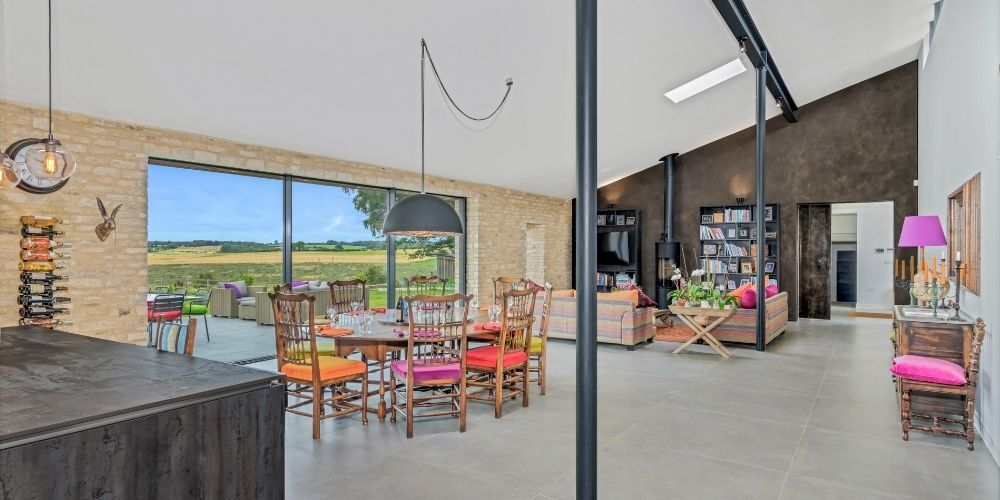
Pic credit: Ed Shepherd Photography
Tell us about a recent project.
Many of our clients value discretion so we're never very comfortable talking openly about specific projects other than our own developments. However, my family and I have recently moved into our very own Castellum project, giving me the perfect opportunity sit both client side and at the coal face simultaneously.
We had our hearts set on a site that had four farm barns on it, two of them still inhabited by cows and long before it was granted planning permission for residential conversion. Getting consent for residential conversion was the biggest hurdle and we had to watch from the sidelines (it wasn’t ours at that point) and wait. We managed to buy it soon after the initial permission was granted and from that point we had a multi-pronged planning strategy.
At the time of purchase the only building to be retained was the stone barn. Four planning applications later we achieved our end goal and were eventually able to retain three of the original farm buildings, maintaining the form of the original farmstead. Our site is on the route of an old Roman Road and there's a scheduled ancient monument in the adjoining woodland so that added a frisson of interest, along with the bats, owls and contamination that were all on site and with a whopping 26 planning conditions to meet. It was a lengthy process but by the time we had met all of the conditions, we'd planned every last detail. Even down to the position of the socket for the Christmas tree! Once building finally began, the construction phase took little over a year.
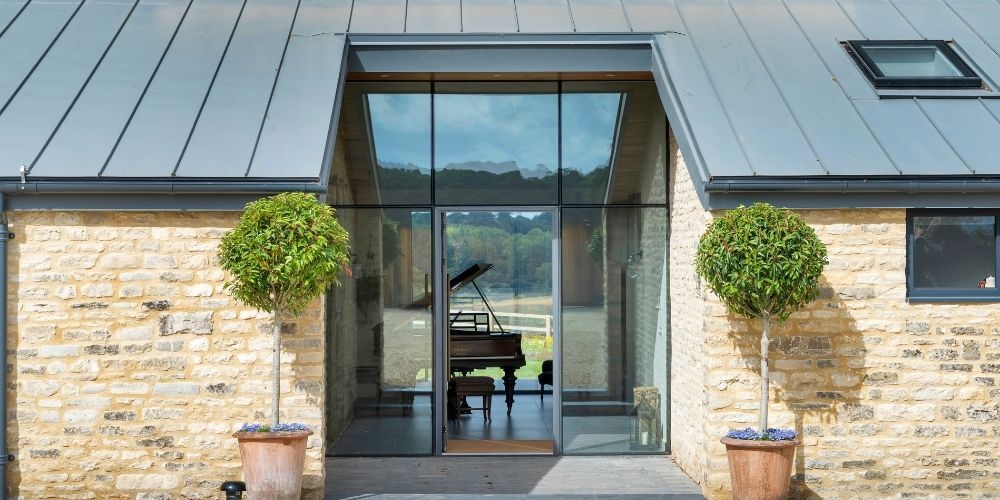
Pic credit: Ed Shepherd Photography
Throughout the planning process, Blake Architects were a joy to work with. So many people have asked me if it is as I imagined it would be and the answer is absolutely. What we've managed to achieve is exactly what we had worked towards.
This home really is all about the arrival, the view and the light. When you pull up on the drive you see a contemporary Cotswold stone barn (Castellum’s stone masons can't be beaten) and through the front door you see straight through the building to the view beyond. All of the living spaces look out to the west but we have high level lighting from the east and roof lights too, which means the house is flooded with light all day long.
We decided to create a home that celebrated Cotswold stone and we decided early on that the visible fabric of the building would predominantly be either clean and white or earthy and natural in texture and colour with the industrial structural steels on show. We used polished plaster, metal, stone and wood.
We love colour too but wanted to bring that in in very bold pops but softly – using sofas, chairs, lampshades and so on. I had been carrying around my sofa fabrics for years and I got a local upholstery company to up-cycle a couple of cream sofas that a good friend of mine was disposing of. My dining table and chairs came from my family home when my parents were downsizing and I had those re-upholstered too.
Our games room was rather a luxury item and is a bit of a giggle. It's the room that I've spent the most time and effort designing in my life – perhaps because I viewed it as a thank you to Ben (my husband) for being so instrumental in achieving our forever home – he was the driving force behind all the things that make the structure work.
This was a complex room – with recycled acoustic panelling and a complicated bulkhead that was needed to enable an upstairs room whilst allowing the sliding external doors to be a full three metres tall to take advantage of our incredible view. I wanted the room to have a club feel and a bar, room for a pool table and space to sit and watch both movies and sport – it really is an escape room and at the time of building, we had no idea that we'd soon be heading into lockdown.
To meet our much desired eco credentials, we bit the bullet and installed a ground source heat pump that uses five bore holes that reach down a staggering 145 metres to heat all three buildings. With the high levels of insulation required by building control, we now have a very energy efficient home that is future proofed against rising fuel costs.
It has been a once in a life time experience I suspect and we're so delighted with it that I can't honestly imagine us ever wanting to move. Part of my own brief was to create a home that my children would always want to come back and visit but now I fear they may never leave!
What interior trends can you foresee for 2021?
My own view is that 2021 is going to be the year of lockdown reactions. Having spent most of the last 12 months ‘at home’ our houses now, more than ever, are required to perform several functions at once. They're still, first and foremost, the places where are our hearts and loved ones live, but now they must also be classrooms, offices, gyms and hopefully soon spaces where we'll entertain again – they've never needed to work so hard and I think 2021 will see us all designing new functionality into our homes.
My personal favourite is the emergence of the home bar! We cannot go ‘out, out’ just yet and whilst that will hopefully change soon, 2020 has been the year of the home bar and I think we'll see a lot more of them in 2021.
On the other end of that scale, we're already seeing in increased demand for home gyms and proper offices. We've also been increasingly asked to design multi-functional rooms for children and young adults, with work areas and spaces to relax in – my favourite example of this is the bed cave – a darkened room within a room to escape to and chill out in – I'm definitely planning to do more of those!
What do you think makes a house a home?
Character. I think it's really important that homes reflect the nature of the people that live in them. Homes, and the people that we share them with, should feed our souls and be both relaxing and fun places to be – places that we are always happy to come back to.
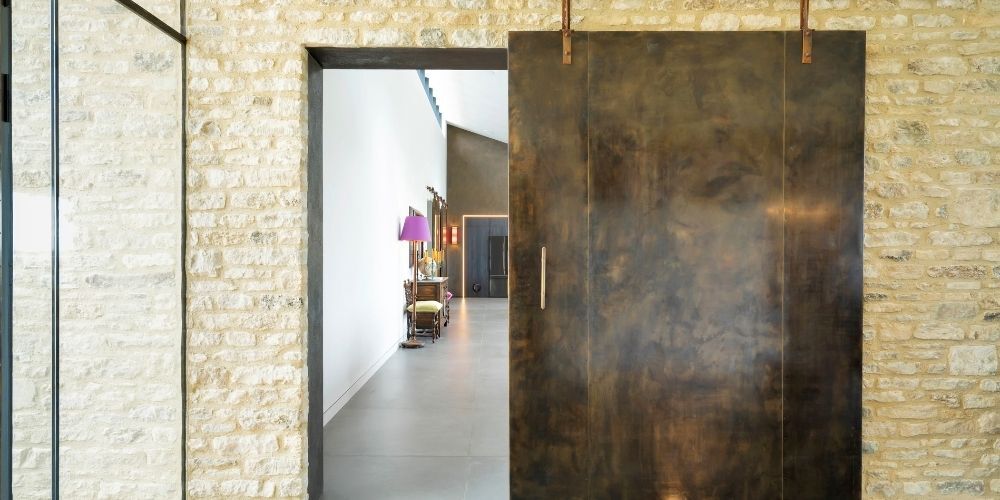
Pic credit: Ed Shepherd Photography
Can you share a few favourite independent designers?
There are so many – The Cotswolds is literally rammed with amazing people!
I don’t want to offend anyone by missing anyone out but a few of our very favourite locals are the aforementioned Blake Architects, Voga Kitchens, Chris Beardshaw for landscaping and Camilla Bellord for interiors.
Further afield, but for niche metal work, I totally love the very talented Alex and Zac at Metal and Butter – think engineering meets really cool art. I've used Metal and Butter a lot in my home – from cladding my front door and the oversized barn style doors in my contemporary living room, to the hand rails on the stairs. They've even helped me to create a pendulum weighted dog gate that closes automatically to keep the woofers away from the bedrooms and a fabulous Lazy Susan for my dining table. They really are awesome! Castellum have used Metal and Butter on numerous other projects.
What are your interior pet peeves or style no-nos?
I’m not sure that I have any style no-nos (though I’m not a fan of pastiche). I like to think that my mind is always open to ideas, no matter how left-field, but my pet peeve is most definitely not having a finished plan before you begin.
Changing your mind along the way usually spells trouble and ill thought-out schemes rarely work. I prefer to plan in depth how spaces will work, where furniture will go and then plan every switch and socket, every lamp and side table, every obscure kitchen appliance (along with where it will live and how often it might need reaching down from a rarely used cupboard) and even where the Christmas tree is going to stand. Occasionally things do slip through the net and unforeseens will pop up. For every genuine problem there's always a solution – that doesn’t phase me. Lack of planning does though!
Favourite material to work with right now?
Metal!
Where do you get your design inspiration from?
Anywhere and everywhere. I love following the likes of @architectureoskar and @arch.design.daily but really, a lot of design inspiration just comes from noticing things. Whether I'm at a friend’s house, or in a hotel, I do tend to notice what stands out, what's clever, what works, and of course, what doesn’t.
What are your tips for successfully blending old and new?
Don’t be afraid of it. There are no rules. The piano in our entrance hall is over 120 years old and looks totally at home in a very contemporary space.
Which designs do you admire?
Most of all I'm drawn to the historical buildings that have stood the test of time and we are so, so lucky to have so many. My father is a historic buildings consultant so I grew up being taken to endless monuments, stately homes and listed buildings.
I loved them then and I love them now… romanticising about yesteryear and imagining who has lived in these buildings before us, how they lived, what they wore (can you guess who loved Bridgerton?). I'm not particular about which period, they all have merits. I regularly visited Wimpole Hall in Cambridgeshire when I was a child and perhaps that's where my slight obsession with symmetry and books comes from, the library there is one of The National Trust’s largest collections and includes Rudyard Kipling’s own collection.
Few people get the chance to live in these awe inspiring stately homes and yet increasing those born into them have struggled to maintain them as times have changed. So many have fallen into disrepair which has always seemed so incredibly sad. Then Kit Martin, an architect and property developer began gaining notoriety in the 1970s/80s in his genius vertical subdivision of these properties, carving them up to create multiple, ostensibly terraced houses, accessible to many more people. Living in stately homes was no longer just for aristocracy and that both fascinated and delighted me. Though I must say, I'm delighted that there are still so many that have remained in tact – Tintersfield, near Bristol, is another favourite – though now in the hands of the wonderful National Trust.
Then in the 80s the repurposing of the incredible docklands warehouses into luxury apartments was equally inspirational. In a former life I designed a brochure advertising an incredible apartment in The Anchor Brewhouse, overlooking Tower Bridge in London. It was industrial and luxurious at the same time and I was blown away by this heady combination; it even had a palm tree growing up through several floors and oh, the view!
I think this might be where my interest in upcycling, converting and repurposing came from. I'm a big fan of sustainability where possible – I love that we put in a ground source heat pump and I love that cows used to live in my house. It's funny really that having grown up in old listed buildings that I love and remain inspired by, I've chosen to design and live in a very contemporary home and I'm very comfortable with that decision. If I was wealthy enough to have multiple homes, my dream would be to have an ancient castle with a (friendly) ghost or three and walls that could tell me stories.
What should people consider when renovating a house?
For me it's all about how spaces flow and practicality. A full on project isn't for the faint hearted but, with the right team, it can (and should) be a great deal of fun. To be able to design your own space to live in is a privilege and not something you are likely to do multiple times in your life. For that reason, plan it properly, choose your dream team and enjoy the ride.
What hidden costs should people be wary of, or factor in?
Engineering, ground works, drainage, insulation, wiring and plumbing and so on. Some would consider these elements dull – but it's critical to get them right. The end project needs to work and if you don’t get the base layers right, the pretty stuff on top is wasted. If you're the sort of person to set off on a world tour without a map, then by all means, buy a plot or a house that you fall in love with and make the rest up as you go along – it certainly would be exciting. If however, like most of us, you would like some certainty, then do your research and put the right team in place to help you achieve your end goal.
Find out more about Castellum and their award-winning prime construction over on their website.
All images belong to Ed Shepherd Photography